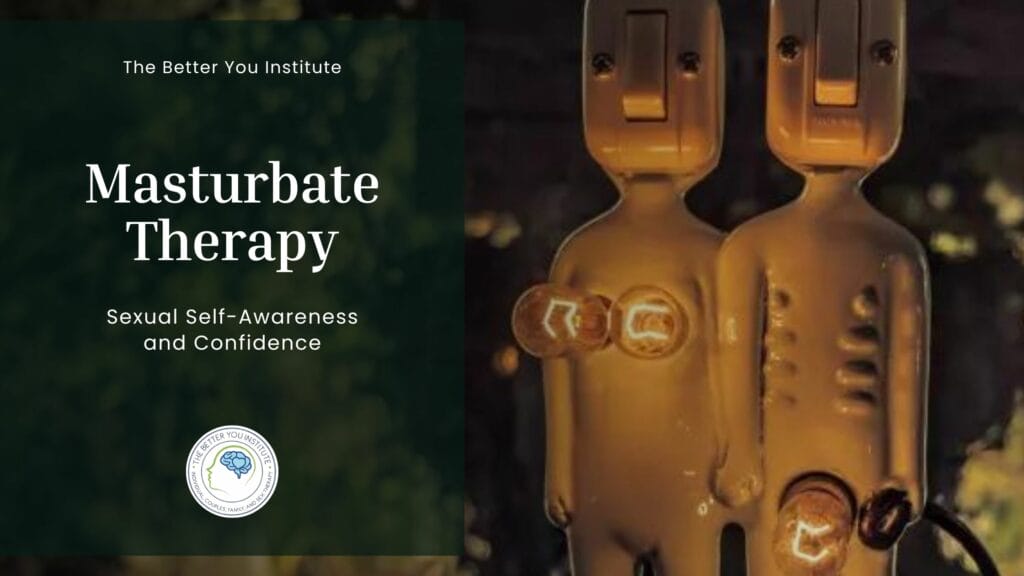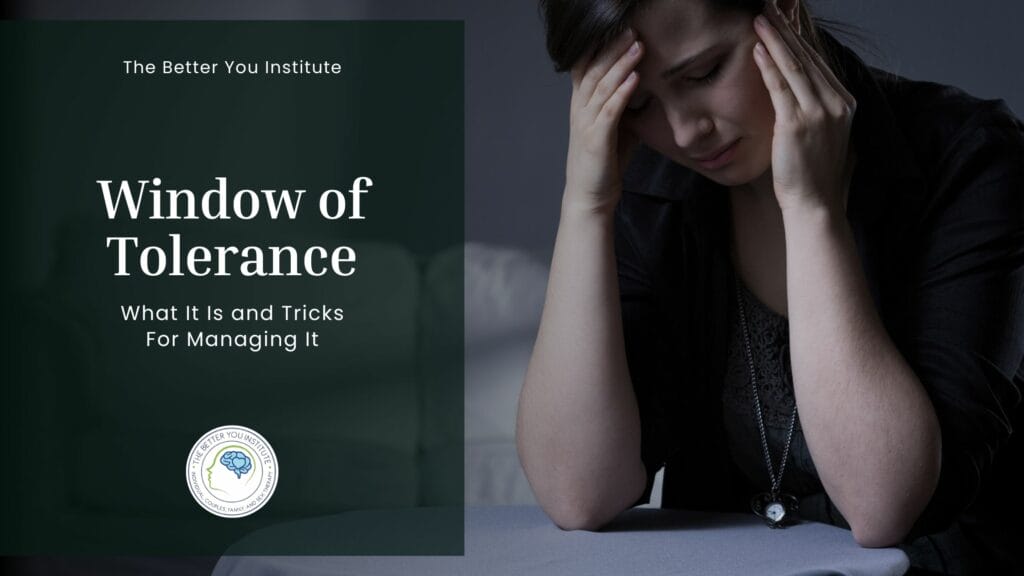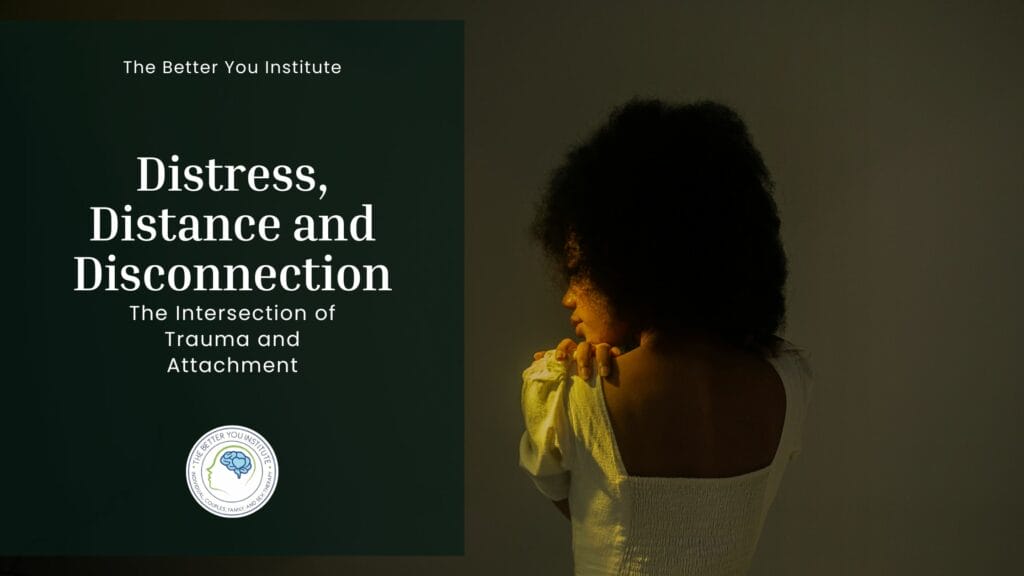Whether you have a long-term partner, are single and loving it, or you’re looking for a new partner, masturbation can be a healthy way to discover your sexual likes and dislikes. You can gain many health benefits from masturbation, as well as building your confidence. Masturbation and masturbation therapy can be a part of your regular life or an intermittent enjoyment. You can use toys or just yourself or include a partner when exploring masturbation exercises, making it easy, fun, and convenient.
Table of Contents
Biology of Masturbation
There are significant health benefits to being sexually active with yourself, a partner, or both. The cerebral cortex, a part of the brain associated with higher-order processing, and the limbic system direct sexual excitement through masturbation (and sex). The limbic system contains the hypothalamus, amygdala, and hippocampus, which help control our emotions and helps us access our memories. You can activate your cerebral cortex through fantasy, visual images such as watching your partner de-robe, or thoughts of your last passionate kiss. Activation of the cerebral cortex allows female vaginal lubrication or the production of an erection in males.
At the same time that your cerebral cortex helps you to become aroused, it can also work against you. If you think about your next project at work or if you locked your car, you may notice yourself becoming less lubricated or erect. Your cerebral cortex also maintains a sense of Self. You may become unaroused if you feel anxious or guilty for the arousal you’re experiencing. Being able to control your thoughts is extremely important to a good sexual experience.
Additionally, the limbic system is actively working to please you. The limbic system guides our sexual behaviors. Desiring sexual activity comes from the amygdala, our house for emotions. The limbic system can help with erections and lubrication and sexual feelings, sensations of pleasure, and memories of previous sexual encounters.
Studies have found that males typically have a more substantial cortical-medial (cerebral cortex and limbic system) area than females. Thereby makes males more sensitive to hormones such as testosterone, which helps activate sexual arousal and pleasure. Studies have also shown that those with sexual arousal three or more times a week are at 50% less risk of having a heart attack or stroke than two bodily reactions to stress. Masturbation can put your body in a more relaxed state by releasing certain hormones: oxytocin (the “cuddle hormone”) and prolactin, leading to decreased stress levels. An increase in testosterone levels tends to reduce cortisol (the stress-induced hormones) levels.
Psychological Aspects of Masturbation
Physical health benefits aside, you should also consider the morale booster masturbation can provide and the happiness that you can gain. By exploring masturbation, you allow yourself to get comfortable with your sexual being. You will better understand your body and its reactions to your (or someone else’s) touch. You will garner confidence that can carry you into a better job, a healthier relationship, exciting new adventures, and so much more. This tip will guide you through various activities to help you gain confidence in your abilities to please yourself sexually.
Playing with the Senses
Explore each sense separately. Doing so will isolate which body part is attached to which sense easier than if you did all of the explorations at once. You really want to focus on each sense individually. As you go through each sense, check in with yourself after each one. You may want to take 30 minutes or so between each one to get back to a base level of arousal.
To gauge where you are sexually, you should ask yourself exploratory questions before, during, and after each activity. Are you calm, nervous, or excited before, during, and after the masturbation exercise? Are you starting to feel aroused in any way, and if so, when did this start? How do you feel your arousal? Is your skin feeling prickly? Is your heart starting to beat faster? Are your genitals throbbing? Are you breathing heavier? What are your thoughts? Are you present or thinking of something other than your sexual arousal? Is the activity becoming easier? These are all arousal signs to be aware of. We encourage you to think of your own questions, too.
If arousal didn’t happen during one or more of these activities, you have just learned something; you probably don’t enjoy that sense regarding sexuality and arousal. That is okay. Each person is different! You may want to change up how you are doing the activity to cover all the bases. Go ahead and try it again, but this time try the opposite way of doing the activity than the one you just used. For example, try a faster pace if you were slower in the activity. What’s happening now?
Sensory Activities for Masturbation
Masturbation and Sight
Masturbation starts before you even touch yourself. First, write down all of your favorite body parts and why. After you have created your list, find a full-length mirror and stand in front of it naked. Once you’re in front of the mirror, go through your list and really enjoy looking at those parts of your body in the mirror. Tell yourself out loud what you like about that part of your body. What do you notice in your body as your looking at yourself? Are you becoming more relaxed? Or, maybe you’re tensing up? Do you get different reactions from looking at different body parts? Are there parts that you do not like? If so, why? Are these body parts standing in the way of you becoming aroused? Understand that your body is beautiful just the way it is. Use mindfulness to bring yourself back to the body parts you love.
Masturbation and Sound
Continue looking at your favorite body parts, and now take it a step further; start talking sexually to your body parts. As you begin talking to your body parts, what’s happening? Pay attention to what kind of sexual talk you’re using. Are you more dominant toward your body parts or more submissive? Are you “touching” your parts with your words, saying things like, “I want to lick you until your soaking wet.” Alternatively, are you paying more attention to the size, shape, and color of your body parts in your words?
Masturbation and Taste
Try licking or eating something that you find erotic- chocolate, whipped cream, phallic objects, juicy foods- anything you may find arousing. Eat or lick these items in a way that is sexual. Maybe you’re chewing slower and moaning; maybe you’re licking with a sexier face than how you usually lick them. If you’re feeling adventurous, taste yourself as you masturbate. Are you sweet, tart, salty? Does the taste of these things change the more aroused you become? How is your body reacting to the taste? Are you staying neutral, are you getting wetter or more erect, are your hips starting to thrust? Is taste an arousal point for you?
Masturbation and Smell
Take in the air around you. Take in the smell of your clothes, skin, genitals, or ejaculate. What’s happening to your nose as you enter your arousal state? What smells turn you on? Your own scent? An old or current partner’s shirt or fragrance? The smell of your favorite candle or body wash? What is your arousal state now? What smells turn you off? A sweaty gym shirt, stinky socks, an odor in the room?
Masturbation and Touch
To get a good sense of what you like, you will have to explore yourself fully. Find a comfortable area in your home where you can relax. We encourage you to have a quiet room with a mirror, good lighting, and little to no distractions. Keeping the lights on and using the mirror will allow you to thoroughly see your body’s reactions and find the specific body part you want to touch.
Once you’ve found a proper spot, begin to undress. Pay attention to how the clothes feel on your skin. Start by taking your shirt off, caress your arms as you do so. Move your hand slowly across your chest or stomach as you move your way down to removing your pants. Feel your thighs as you reach down to take your socks off. Allow your hands to be your primary tool for exploring what the rest of your body feels like. As you move through your body, focus on touch. By focusing only on touch and not the other senses (like sight) at this time, you will later be able to discern if a body part is arousing through sight or touch, or both.
Now that you’re naked, figure out a comfortable position and continue to caress parts of your body. First, start to explore the nonsexual parts of you. Maybe you’re touching your face or your shoulders. Maybe you’re rubbing your inner thigh or your lower stomach, or your back. Again, pay attention to what’s happening to your body. Are you enjoying your touch? Is your skin smooth or rough? Does it tickle in certain places? What non-sexual areas are your favorite to touch? Why?
What position are you in? Are you still comfortable, or do you need to adjust? Is there another position you can try that may be more comforting?
As you continue to rub yourself, begin to change the speed at which you move your hands or your feet on your other body parts. Do you like it slower or faster? Now play with the pressure you are putting on yourself. Is a harder or lighter pressure better for you? Now play with direction. Are you more into a circular or lateral direction? Or, maybe you don’t like the direction at all; you like to go with wherever your hand is taking you. Do you like to be rubbed or tapped?
Continue to touch yourself and move your way to your more sexual parts. Start with your breasts/pecs and nipples. Again, pay attention to what’s happening in your body. What’s your breathing like? Are you beginning to show signs of arousal- lubrication or erection? Also, try the different pressures, speeds, and directions. Some people may enjoy pinching their nipples; if so, play around with the pressure of the pinch. Others might want to try flicking or slapping their nipples or breast. Try using your whole hand or just a few fingers.
Now move your way down to your genitals.
Cisgender Female Genitals:
Begin masturbation by just touching the outside of your labia. Move up and down and back and forth. If you have genital hair, maybe play with the hair. If you do not, what does your skin feel like? Feel all your sensational folds as you continue to caress yourself using the pressures, speeds, and directions you’ve identified for yourself. Now change them. Does it still feel good?
When your body tells you to, part your labia and make your way to your clitoris. Go in circles, switching the direction occasionally. Use up and down motion, tapping motion, and flicking motion. What feels best for you? Is there a specific place that you enjoy touching more than others? Is it your right side or your left side? Is there a length of time that feels better for you to stay in one place? Here you can also introduce temperature either with a chilled finger, ice cube, glass dildo* or with a warmed glass dildo**, or lubrication that uses heat play.
Pay attention to what the rest of your body is doing. Are your nipples erect? Is your back arching at all? How is your breathing? Is it deep and slow, or short and fast?
Continue to touch your labia and vulva. If you feel you are adequately lubricated and want to explore your vaginal canal, go ahead! Maybe you’ll start with one finger; maybe you’ll start with two. Listen to your body and what it’s asking for. You can explore here what kind of motion you enjoy. Do you like slower, longer motions, or faster, shorter motions, or circular or linear movements? Play with the pressure by pressing harder and lighter. Get creative with your motions and see what you like. Also, pay attention to how long you stay in one area. Do you like to keep your motions varied, or is consistency better for you?
Can you find your g-spot? If so, do you like touching it? What touch is best for you? While you’re inside your vaginal canal, do you also like touching your clitoris? With what fingers does all of this feel best? What pressures, speeds, and directions?
While paying attention to furthering your arousal, if you find yourself becoming more and more stimulated, feel free to continue until you orgasm. Give into the physical feelings and stay out of your head. Orgasm should not be your goal throughout these masturbation therapy exercises, however. Instead, your goal is to learn what your body wants and needs regarding sexual arousal. One thing you may need to learn, though, is how to let your body give in to the orgasm.
Cisgender Male Genitals:
As you are starting to make your way down to your penis, notice if you are erect or not. Run around the base of your penis and in your groin area. Do you like touching around the penis? Alternately, do you like the penis itself better? Or, maybe you like touching both. Try touching the testicles without your other hand on the penis. Do you like your testicles rubbed, squeezed, or just having a hand on them? Does this alone turn you on? Does it turn you on more or less with your other hand on your penis?
If you are uncircumcised and fully erect, your foreskin should have moved down toward the base of your shaft. If not, gently pull the skin down to allow the tip of your penis to be in the open air.
Begin to rub your penis using as many fingers around the shaft as you’d like. You may want to vary how many fingers you use throughout this masturbation exercise. Grip your penis with varying pressure. Which pressure do you like best- light, tight, or in the middle somewhere? Try stroking up and down the shaft with both faster and slower motions. You can grip the skin and move it along with your hand. Or, you can move your hand up and down the skin to create a friction feeling. Do you like the up and down motion? What about turning your hand on your shaft as if you were opening a bottle cap? Does this feel good? What area of your shaft feels best? The base, the middle, or the tip? Are one or two hands better? Are you touching your testicles while you’re moving along your shaft?
If you want to try temperature play, try rubbing your hands together to make a warming sensation, or hold a cold glass of water to give them a chilling effect. Some lubricants can aid in temperature play.
Consider using a lubricant to aid in masturbation. Determine how much or little lubricant you need and if a sensation lubricant enhances your masturbation or not. Try out different types of lubricants such as silicone, water-based, or oil-based. Spit is the cheapest and most readily available natural lubricant. Silicone lubricants tend to be longer-lasting but more expensive. Oil-based lubricants are long-lasting but can be messy. Water-based lubricants are the easiest to obtain and the cheapest; however, they tend to dry quickly.
The anus is packed full of nerve endings and can sometimes be forgotten by [heterosexual] men regarding sexual arousal. Try feeling around your butt cheeks and anus to determine if it is an erogenous zone for you. Explore every aspect of your genital region by touching and rubbing before moving on to more specific touch activities. If you found the anus to be an erogenous zone, explore it with a finger or sex toy. You may find that you enjoy insertion or simply rubbing around the area.
As you can see, masturbation can give you sexual Self-awareness and confidence while providing physical and mental health benefits. Give masturbation a try using the above tips or go at it and find what excites you. If you’re still struggling to gain sexual Self-awareness or confidence in the bedroom, do not hesitate to call a trained sex therapist in Philadelphia to set up a talk therapy appointment at 267-495-4951. If meeting with a therapist in person makes you nervous, or gives you anxiety, or you live too far to meet us in a one-on-one therapy setting, we are currently offering online sex therapy.
Meet The Author:

Nitasha Strait, Ph.D., M.Ed., MA, LMFT, CST
Licensed Marriage and Family Therapist
Nitasha Strait, Ph.D., M.Ed., MA, LMFT, CST, is a Licensed Marriage and Family Therapist and Certified Sex Therapist known for blending warmth, empathy, and supportive learning in therapy. She fosters a genuine and laughter-filled environment, empowering clients to make positive life changes. Nitasha's approach is process-oriented, focusing on both first-order (behavioral) and second-order (fundamental) changes. Her expertise is enriched by her teaching experiences at Temple University, Penn State University, and Rutgers University. She utilizes various therapy models, provides diverse resources, and is dedicated to facilitating deep, lasting change. Nitasha holds degrees from La Salle University and Widener University, specializing in Human Sexuality.
Learn more about Nitasha Strait ⇒







